When we’re talking about taking day trips from Seoul, there are countless possibilities of places to explore outside the capital. If you’ve been to Korea, you’d know that the KTX, the high-speed rail system, is the favoured way to travel around the country — but it’s hardly the most affordable. While trains get you to your destination in the shortest amount of time, travelling by bus is the most economical option.
Whether you’re based in Seoul for summer school and living on a student income or simply a traveller on a tight budget, bookmark this list of day trips to take from Seoul that’ll cost you less than S$50 (approximately ₩43,100) both ways!
1. Jeonju
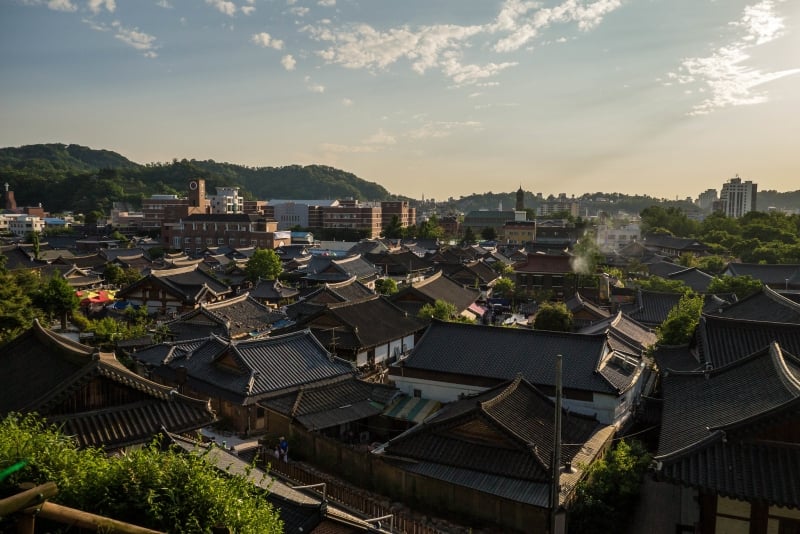
Image credit: Gioconda Beekman
Far from Seoul’s quick pace, this city in North Jeolla is where you can experience ‘slowness’ through traditional Korean heritage that has been preserved.
With over 700 traditional Korean hanok houses, Jeonju’s most famous attraction by far is Jeonju Hanok Village. Being much larger in size than Seoul’s Bukchon Hanok Village, this village is an example of how there’s so much more to discover when you venture out to the rest of Korea.
Get insight into ancient Korea through its traditional architecture, and delve deeper into the experience by visiting the Hanok Life Experience Hall.
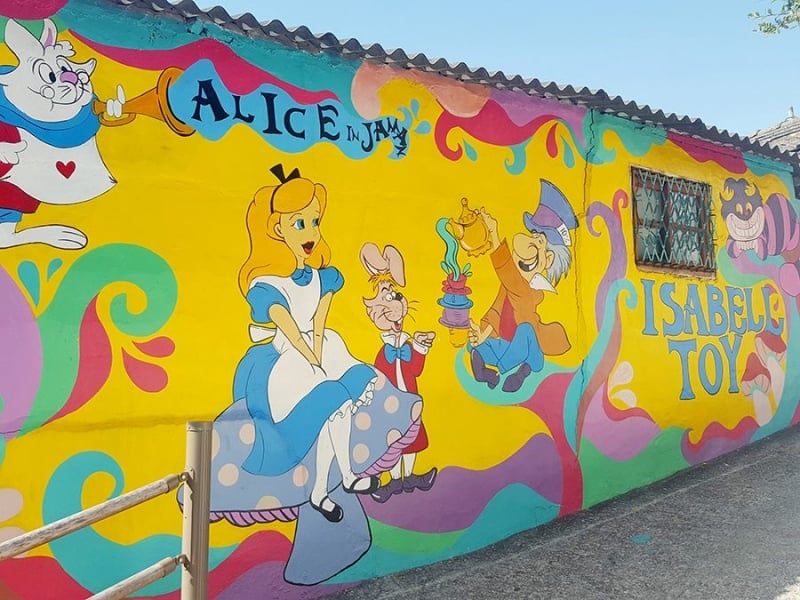
Image credit: Global Jeonju
While you’re in the area, don’t miss the chance to visit Jaman Mural Village located on the hills next to the Hanok Village. This is a village brimming with quirky cafes and handicraft shops, and of course, colourful hand-painted murals!
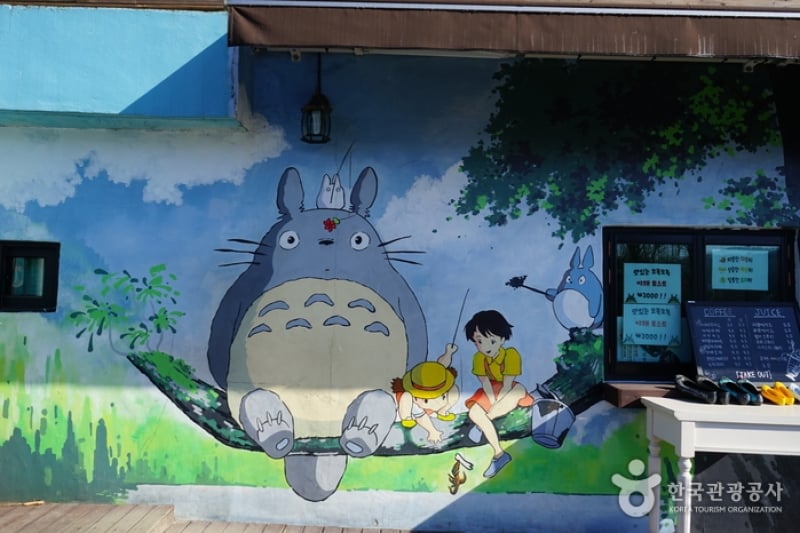
Image credit: Korea Tourism Organization
This outdoor art gallery is also a must-see for Ghibli fans!
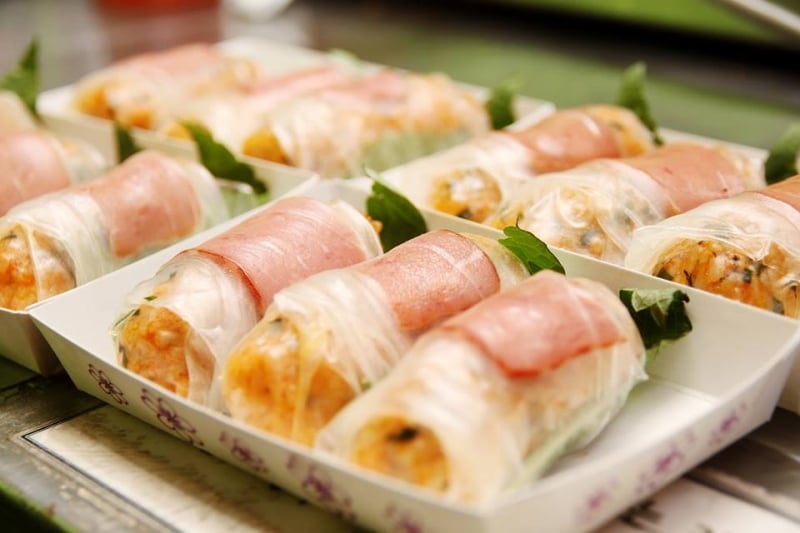
Image credit: 전주남부시장
Jeonju also happens to be the food capital of South Korea. If you have the chance to, head to the Nambu Night Market on weekends for the most unique street food. You can sink your teeth into yachae tungtaeng (pan-fried bacon vegetable rolls), metal-roasted bibimbap and more! Speaking of bibimbap, Jeonju is considered the birthplace of this widely-known dish, making it a must-try while you’re in the city
Getting there: One-way bus ticket from Seoul Express Bus Terminal to Jeonju Express Bus Terminal costs ₩11,000–16,000.
2. Paju
When you hear the name ‘Paju’, the DMZ or demilitarised zone may come to mind, but there are in fact other types of attractions in the area.
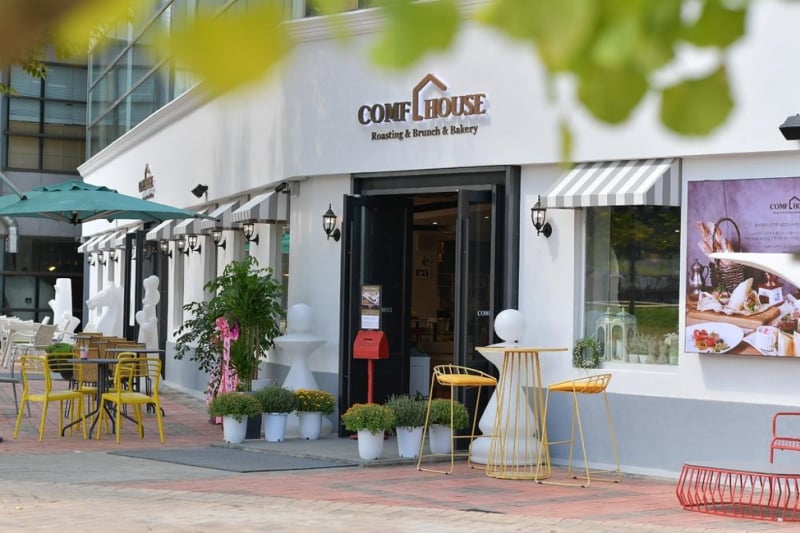
Image credit: Heyri Art Valley
For one, Heyri Art Valley is a spot for creatives. Art galleries, music halls and theatres abound in this village constructed by Korean writers, artists, actors, musicians and so forth. Pop into one of the many gorgeous cafes here, and take in all the art surrounding you.
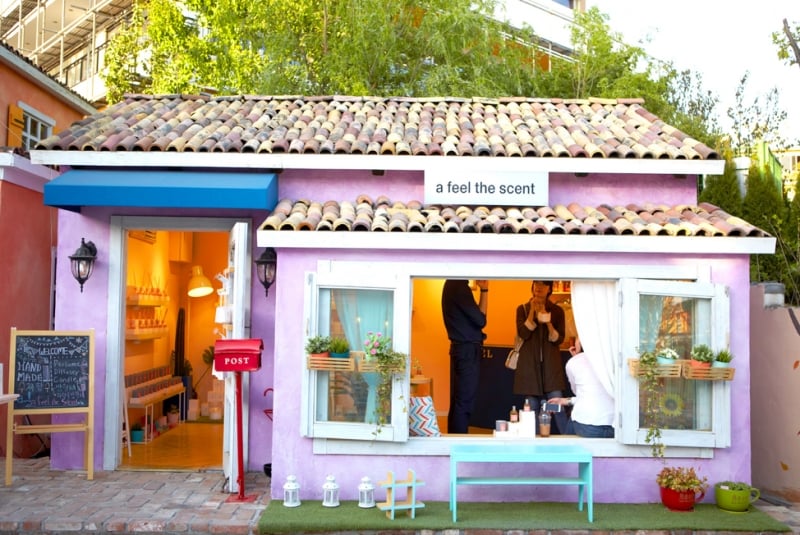
Image credit: Provence Town
Another picturesque village to look forward to in Paju is Provence Village, a southern-French-inspired culture town. With alleys lined up with pastel-coloured stores selling food, fashion, homeware and cultural items, you’ll find yourself second-guessing if you’re really still in Korea!
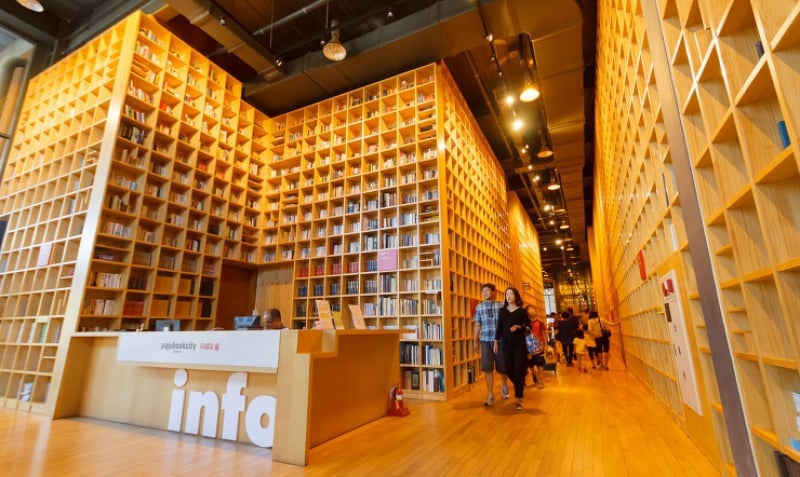
Image credit: Paju Book City
Heading to Paju Book City will be the ultimate experience for people who love books. It’s an industrial complex which sees the production process of a book from start to end. While you’re here, visit their impressive library which they call the ‘Forest of Wisdom’. There’s also a book cafe and many bookstores in the complex.
Getting there: One-way bus ticket from Hapjeong Station to Paju (bus no. 2200) costs around ₩2,400.
3. Sokcho
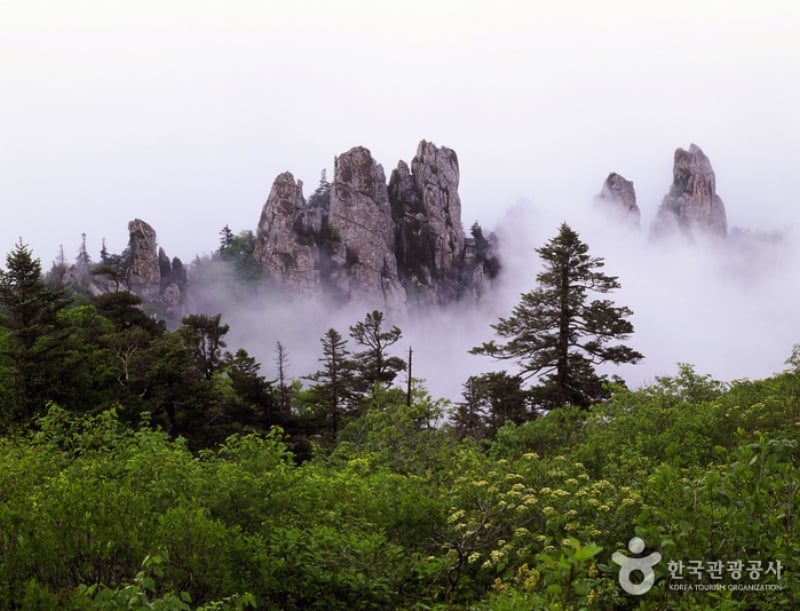
Image credit: Korea Tourism Organisation
What’s located in Sokcho is none other than the beautiful Seoraksan Mountain, one of the most accessible hikes to take near Seoul. As leisurely as the hike up is, there’s also the option of taking the cable car up.
Don’t be fooled into thinking there’s not much to do once you’re up in the mountains. Check out the Gwongeumseong Fortress where a castle used to stand during the 13th century.
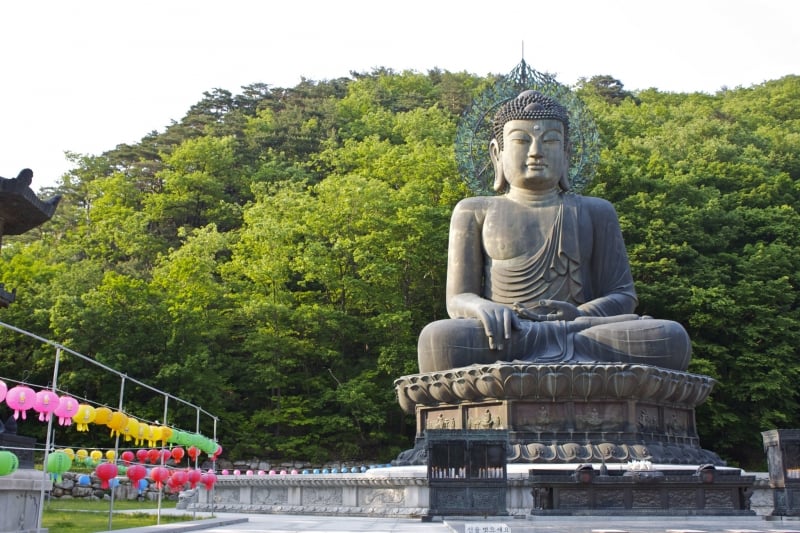
Image credit: Chelsea Marie Hicks
Your entrance fee to the Seoraksan National Park also already includes admission to the Sinheungsa Temple, where the 10 metre-tall Great Unification Buddha statue is located.
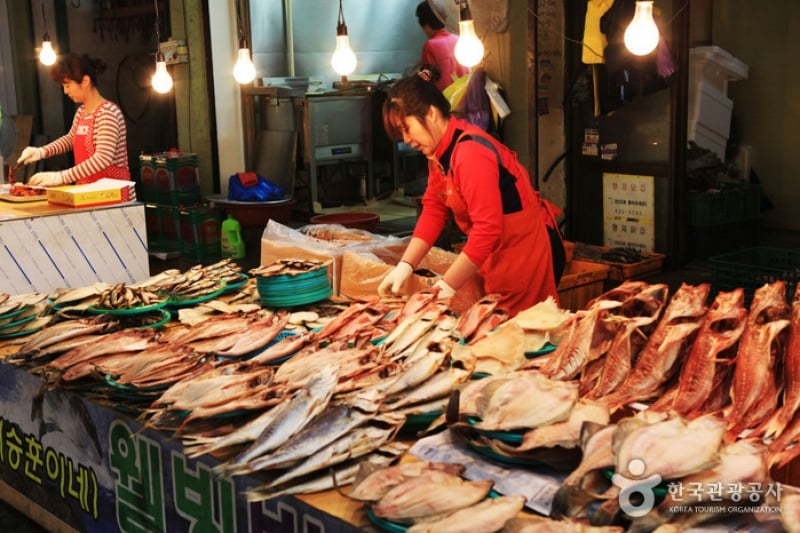
Image credit: Korea Tourism Organisation
Due to its location on the east coast of the Korean Peninsula, fishing forms a large part of Sokcho’s culture. Visit the Sokcho Tourist & Fishery Market to see the fresh fish as well as dried fish, pickled seafood, and more delicacies being sold. Treat your tastebuds at the raw fish restaurants as well as street snack specialties available at the market.
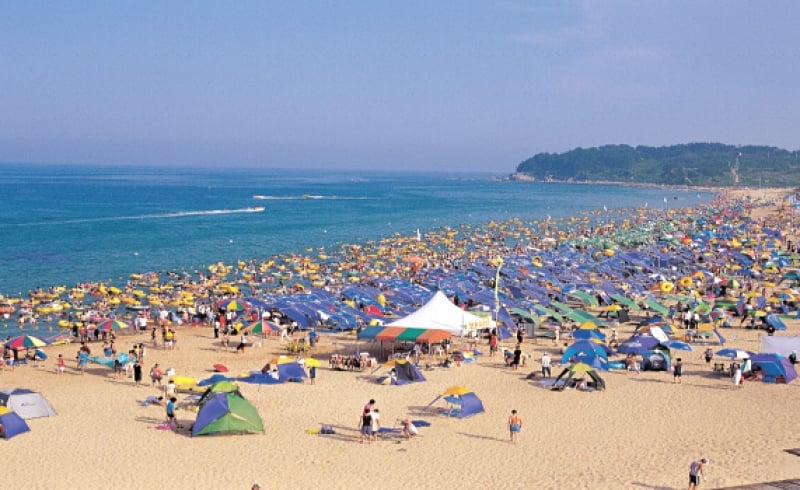
Image credit: Sokcho Beach
What’s a trip to this rich fishing town without seeing its dazzling blue waters? This summer, Sokcho Beach will also be open at night until 9pm from 5 Jul–18 Aug 2019 and swimming is allowed from 27 Jul–10 Aug 2019! Before heading back to Seoul, look out for nearby restaurants serving fresh Sokcho seafood.
Getting there: One way bus ticket from Seoul Express Bus Terminal to Sokcho Express Bus Terminal costs ₩13,800–19,600.
4. Danyang
Danyang is known for its incredible natural scenery; what with a group of attractions even dubbed the ‘Eight Scenic Views of Danyang’ (단양-팔경). If you’re feeling slightly dreary in Seoul, head over to Danyang to take in all the lush greenery and fresh air here.
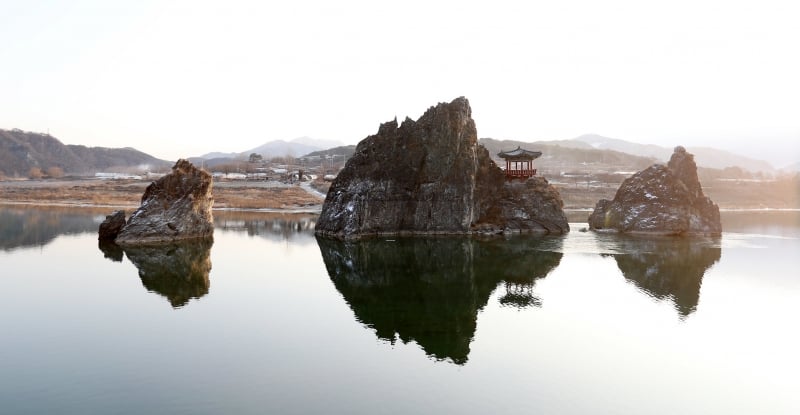
Image credit: Republic of Korea
The most famous of the eight sights are the Dodamsambong Peaks — three rock islets that stand in the middle of the Namhangang River. Based on a legend, they’re commonly known as the Husband, Wife and Mistress rocks. These peaks, along with other scenic features in Danyang, remain beautiful throughout the seasons.
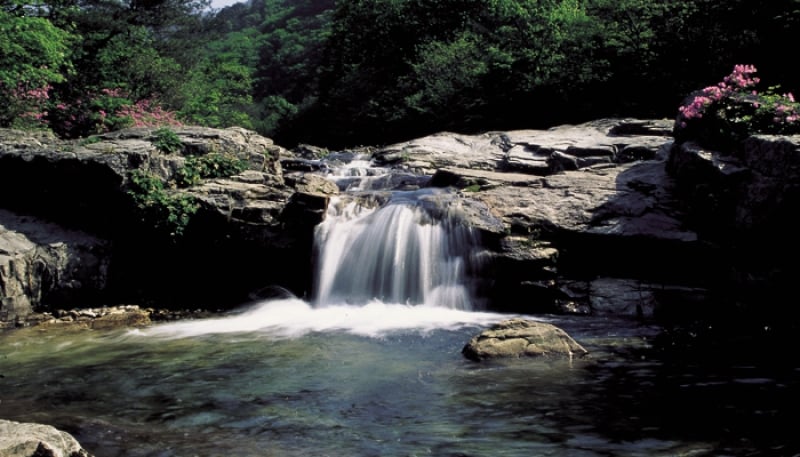
Image credit: Danyang-gun
The Namhangang River that surrounds Danyang is in fact a tributary of the Han River. In the summer, you can even try your hand at blue-water rafting along the changing rapids!
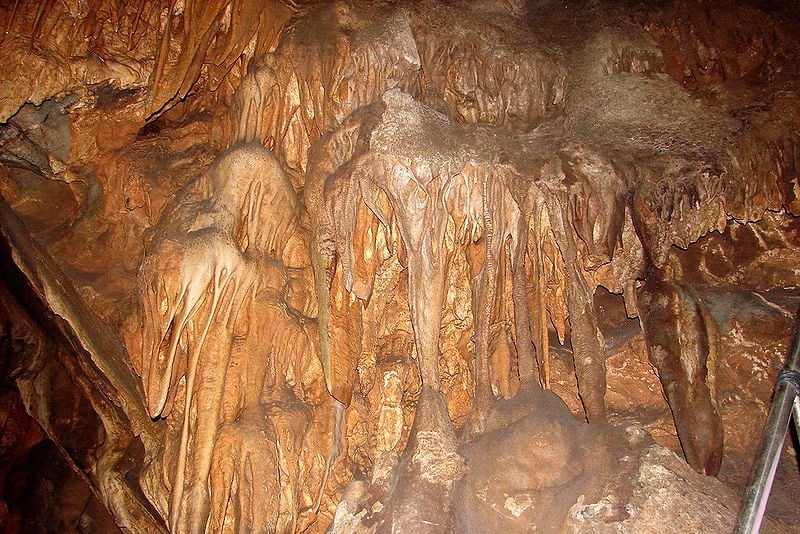
Image credit: Steve46814
Caves are also a cool feature in Danyang. Choose from one of Korea’s most famous caves, Gosu Cave, or Ondal Fortress where you can explore a limestone cave.
Getting there: One way bus ticket from Dong Seoul Bus Terminal to Danyang costs ₩11,900–14,000.
5. Andong
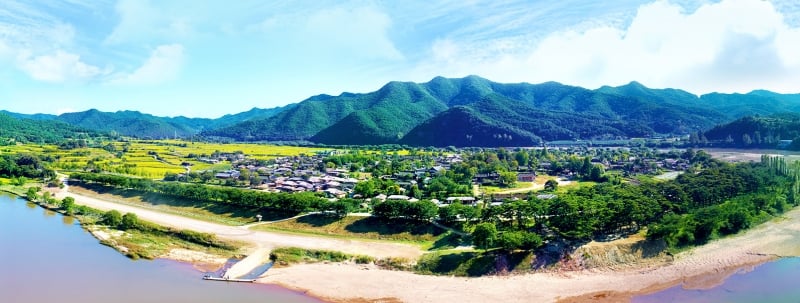
Image credit: Andong Hahoe Folk Village
Andong is the best place to head to for a heavy dose of traditional Korean culture. When the Queen requested to be taken to the “most Korean place”, Andong is where she ended up!
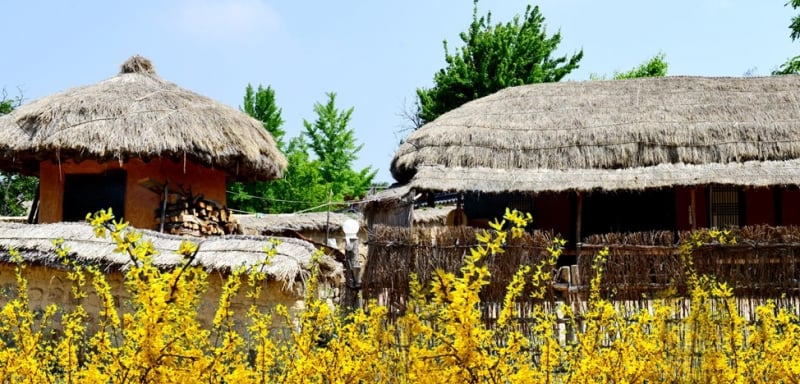
Image credit: Andong Hahoe Folk Village
Its most famous attraction, the Andong Hahoe Folk Village was added to the UNESCO World Heritage List as one of the “Historic Villages in Korea”, and it’s no wonder why! At this village, a number of cultural traditions have been preserved and are being showcased, including Korean masked dance.
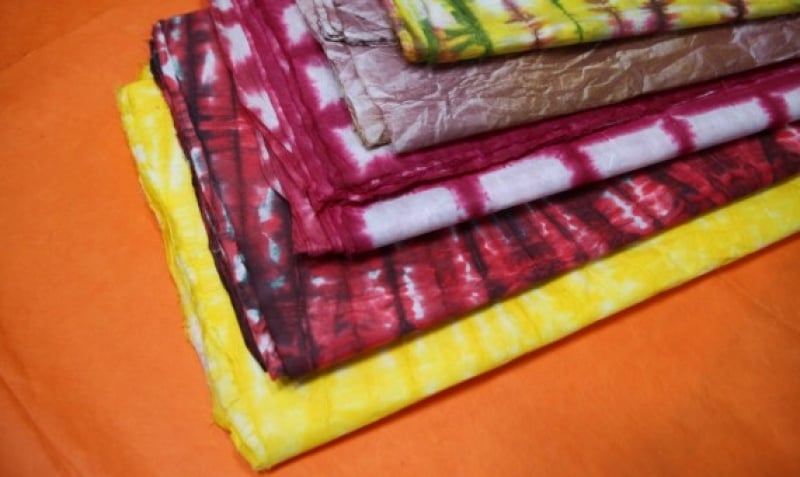
Image credit: Andong Hanji
Head to Andong Hanji to learn about traditional paper-making in Korea. Hanji is handmade paper using paper mulberry bark as its main ingredient. The experiences you can opt for include a free factory tour, hanji-making, and making hanji-based handicrafts!
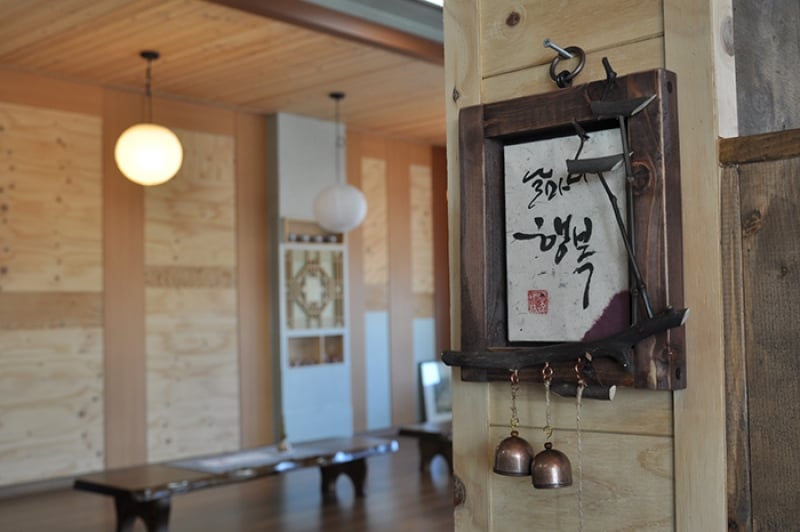
Image credit: Andong Hanji
At Andong Hanji you’ll also find the Hoonminjeongeum Cafe, a cafe where you may foster an appreciation for Hangul and the Korean language.
Getting there: One way bus ticket from Seoul Express Bus Terminal to Andong Terminal costs ₩15,700–16,500.
6. Boryeong
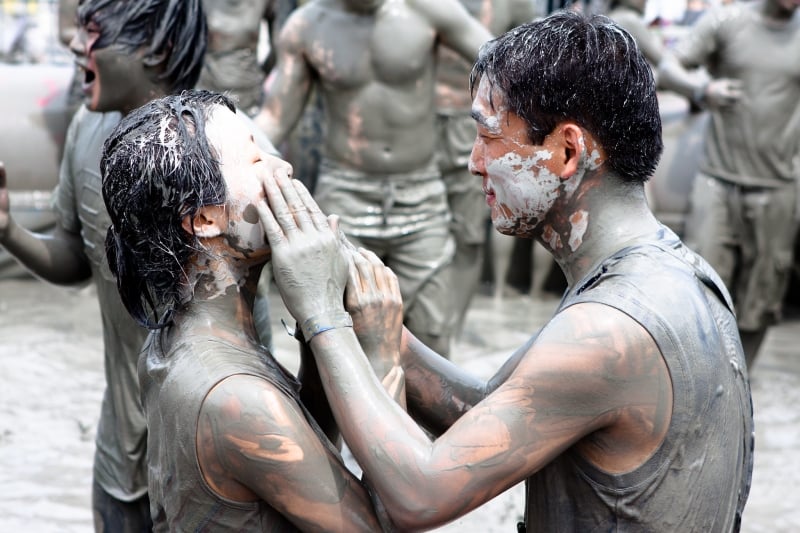
Image credit: Jirka Matousek
Nowhere in Korea is hotter in the summer than Boryeong — it’s a popular summer pick due to the annual Boryeong Mud Festival! Held on Daecheon Beach, it’s a festival where locals and tourists alike flock to get down and dirty in the mud, all in good fun.
Also read: A Seoul-ful Escape from the Heat! 9 Cool Ways to Experience Korea’s Culture in the Summer
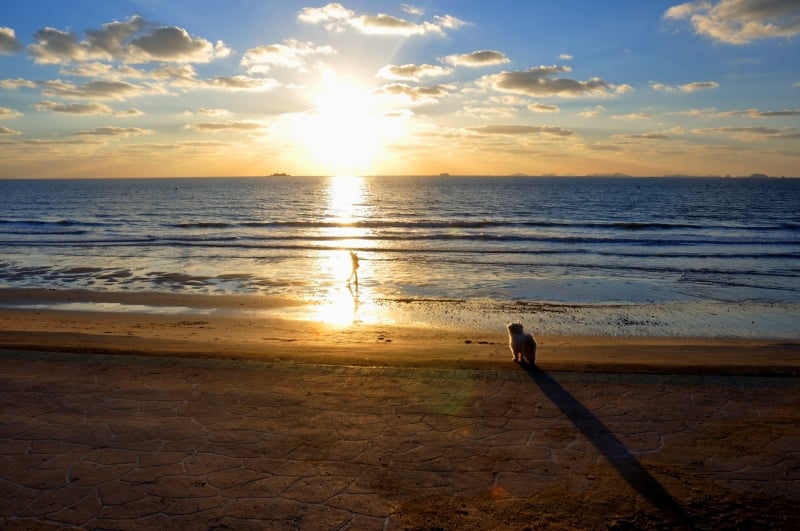
Image credit: dolcom01
If you’re not into the idea of a mud cleanse, Daecheon Beach still warrants a visit, being one of the largest stretches of coastline South Korea’s west coast. And if it isn’t summer, there are also tons of other festivals that take place all-year round such as the Jusan Cherry Blossom Festival in spring and Seongjusan Mt. Maple Festival in autumn.
Getting there: One way bus ticket from Seoul Express Bus Terminal to Daecheon Terminal costs ₩10,900–15,900.
7. Daejeon
At the mid-point of Seoul and Busan lies Daejeon: the 5th largest metropolitan city in Korea.
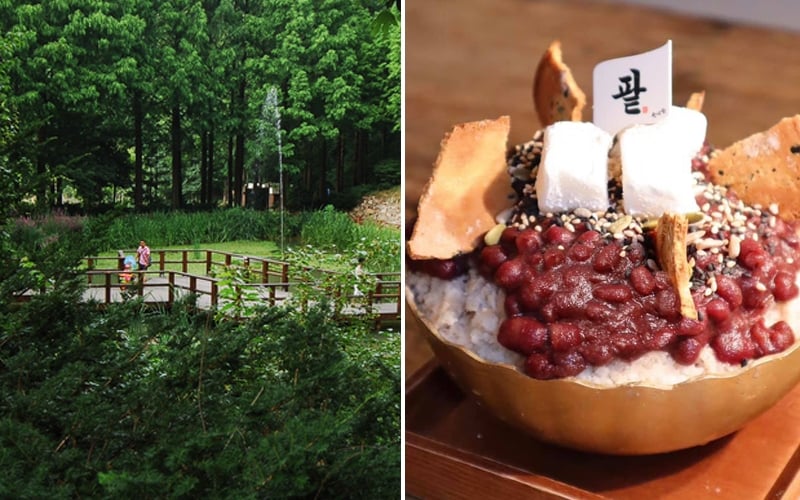
Image credit: Korea Tourism Organisation (left), Sungsimdang Bakery (right)
From the ‘healing’ Jangtaesan Recreational Forest to satisfying your sweet tooth at the renowned Sungsimdang Bakery, Daejeon is definitely a great destination for a day trip.
If you really want to make it to Busan without taking the KTX, you can consider making a stopover in Daejeon — you’ll get to enjoy all its attractions and it’ll make your bus journey to Busan less taxing!
To find out more about what to do on a short trip to Daejeon, read: 48 Hours in Daejeon — The City Between Seoul & Busan You’ve Been Missing Out On
Getting there: One way bus ticket from Seoul Express Bus Terminal to Daejeon Terminal costs ₩14,000.
There you have it, seven day trips you can take from Seoul by bus that’ll cost you under S$50 in transport. From discovering lesser-known street food to gaining a deeper appreciation for Korean heritage, venturing outside of Seoul will surely grant you rewarding experiences that’ll leave you feeling glad you made the journey!
To find more underrated attractions in Korea, visit Korea Tourism Organization’s official website and Facebook page.
Brought to you by Korea Tourism Organization (Singapore).




